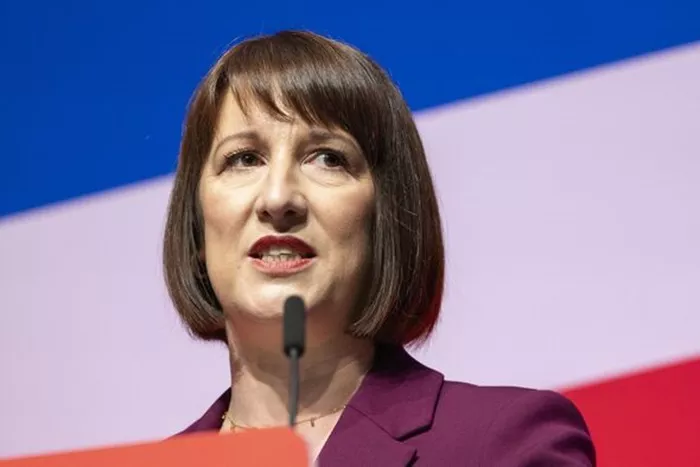Chancellor Rachel Reeves is facing significant scrutiny over her plans to increase government spending through borrowing, as economists warn that this approach could lead to a “buyers’ strike” in the gilt market. With her upcoming Budget scheduled for October 30, the stakes are high for the UK’s financial stability and investor confidence.
Warning from Economists
Economists have expressed “material concern” regarding Reeves’ intentions to embark on a debt-fueled spending spree, despite her assurances that any borrowing will be directed towards growth-enhancing infrastructure projects. The Chancellor has emphasized her commitment to “invest, invest, invest” in her maiden Budget.
Nervous Overseas Investors
Citi, one of the few financial institutions authorized to trade government gilts directly with the Treasury, reported that overseas investors are particularly anxious about Reeves’ spending plans. Benjamin Nabarro, chief UK economist at Citi, noted that the repercussions of the Liz Truss mini-Budget in 2022 continue to linger over debt markets.
Impact of Past Decisions
Nabarro highlighted that international investors are reluctant to trust the gilt market due to uncertainties surrounding government spending. He mentioned, “Once that uncertainty has entered the market, we have seen not a full-blown, but a tacit sort of buyers’ strike begin to emerge in the market. And that is a material problem.”
Current Confidence in UK Debt
While Nabarro acknowledged that buyers currently maintain confidence in UK debt, he indicated that this could change if there is a perceived increase in investment spending. Financial stakeholders are closely monitoring discussions regarding potential revisions to the UK’s debt rules that could enable Labour to increase borrowing.
Potential Changes to Debt Rules
Reports suggest that Ms. Reeves is contemplating rewriting Britain’s debt rules, which could unlock an additional £50 billion for spending in her inaugural Budget. Nabarro remarked that there are “material concerns” about the current state of the gilt market, emphasizing the need for caution.
Pressure on Public Finances
The UK’s public finances are under substantial strain, with the Treasury projected to pay £89 billion in debt interest this year. This figure is expected to rise to nearly £110 billion by 2028-29. Increasing the debt burden may exacerbate these challenges, but the Chancellor argues that investment in the nation’s infrastructure is crucial for long-term growth.
Risks of Rapid Implementation
George Lagarias, chief economist at Forvis Mazars, cautioned that Reeves may find herself at the “mercy of the bond markets” if she moves too quickly with her spending plans. He emphasized the need for prudence, especially given the current volatility in bond markets and the rising uncertainty among investors.
Call for Gradual Investment Approach
Sanjay Raja, chief UK economist at Deutsche Bank, urged a measured approach to investment, advocating for a gradual ramp-up of unfunded investments focused on productivity and potential growth. He stressed the importance of transparency in government communication to mitigate risks associated with a sudden influx of spending.
Addressing Investor Concerns
In an effort to alleviate investor anxieties regarding her debt-fueled investment strategy, Ms. Reeves has asserted the necessity of making “prudent, sensible investments” with appropriate safeguards. However, Nabarro cautioned that a significant buyers’ strike in the gilt market remains a “conceivable risk” if the Chancellor’s plans involve substantial changes to debt rules.
Need for Clear Spending Guidelines
Nabarro emphasized that it is essential for Reeves to establish “guardrails” around any additional spending, ensuring clarity about how funds will be allocated and monitored. He urged that any extra spending capacity should be approached with caution and transparency.
Rising Borrowing Costs
Concerns about public finances and fluctuating market expectations for interest rates have led to a recent spike in UK borrowing costs. Currently, the UK pays 4.2% to borrow for a decade, a stark increase from the pandemic-era low of less than 0.1%. This widening gap between UK and German borrowing costs reached its highest level in over a year.
Reliance on Foreign Investors
Nabarro pointed out that the UK has consistently operated beyond its means, running both a budget and current account deficit, which has left it reliant on foreign investors for financing. This dependence complicates Reeves’ plans to increase spending amid growing market concerns.
Market Volatility and Investor Sentiment
The backdrop of Reeves’ proposed spending increase coincides with heightened volatility in US bond markets. The MOVE index, which measures volatility in the US Treasury bond market, surged by 24% on Monday—the largest daily increase since October 2020—further emphasizing the unpredictable landscape for investors.
Conclusion
As Rachel Reeves prepares for her first Budget, the implications of her borrowing strategy are increasingly under scrutiny. While her focus on infrastructure investment is essential for long-term growth, balancing this with the need for fiscal prudence is crucial to maintain investor confidence and ensure stability in the gilt market. The upcoming weeks will be critical in determining the direction of the UK’s financial landscape.
Related Topics:

